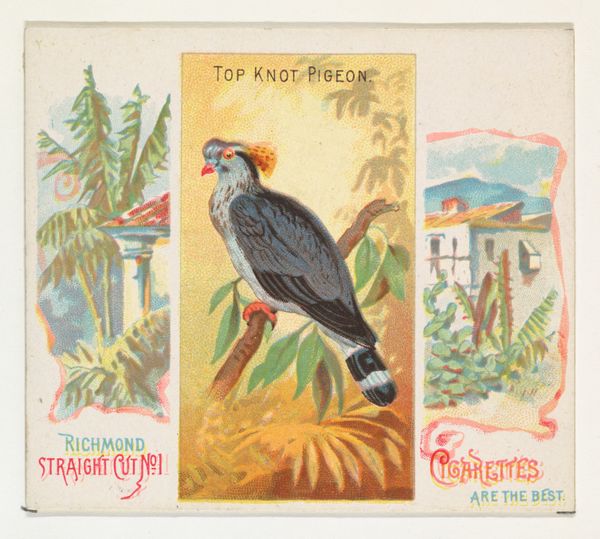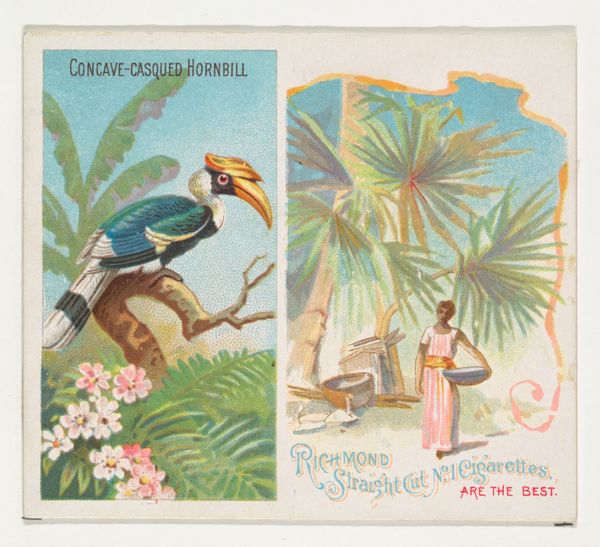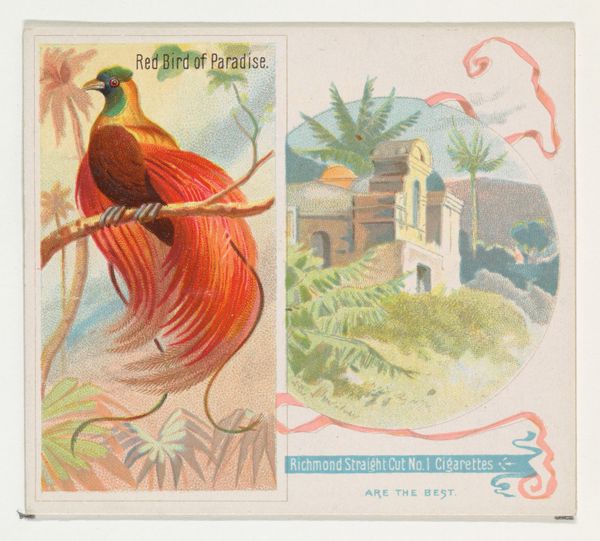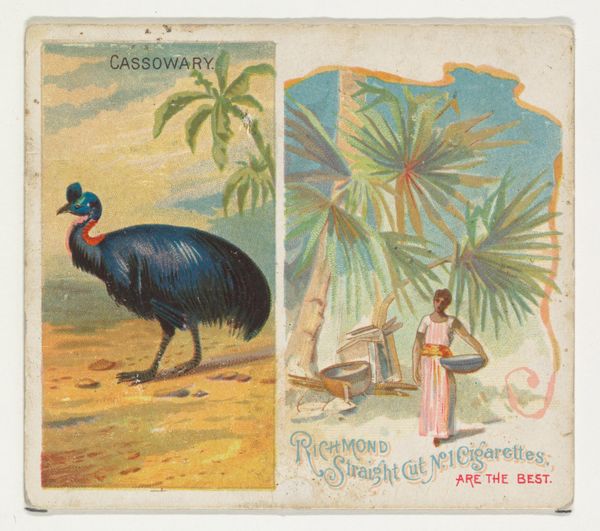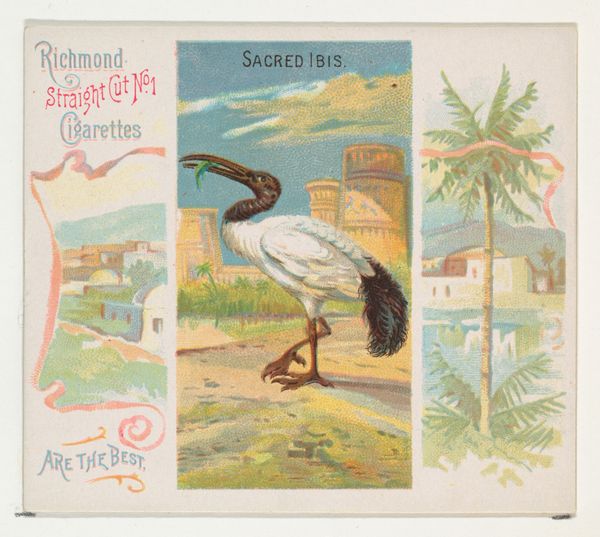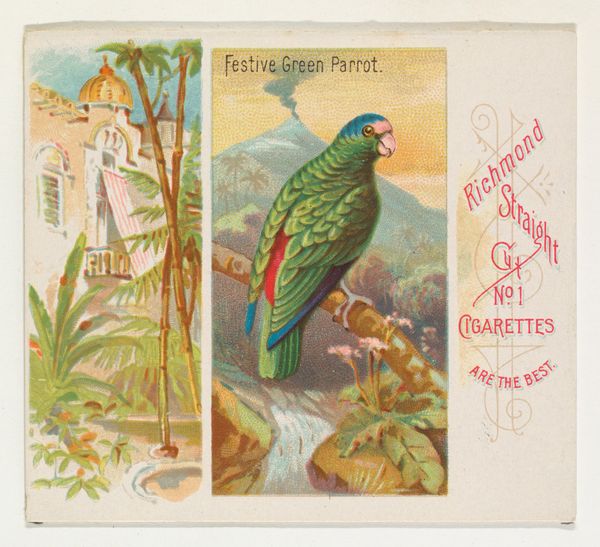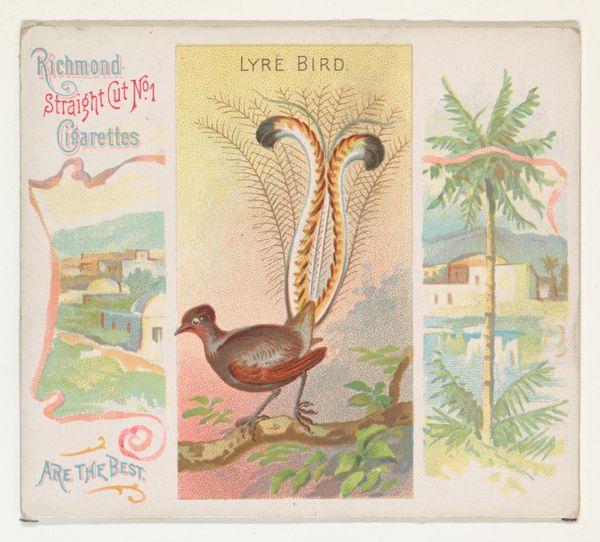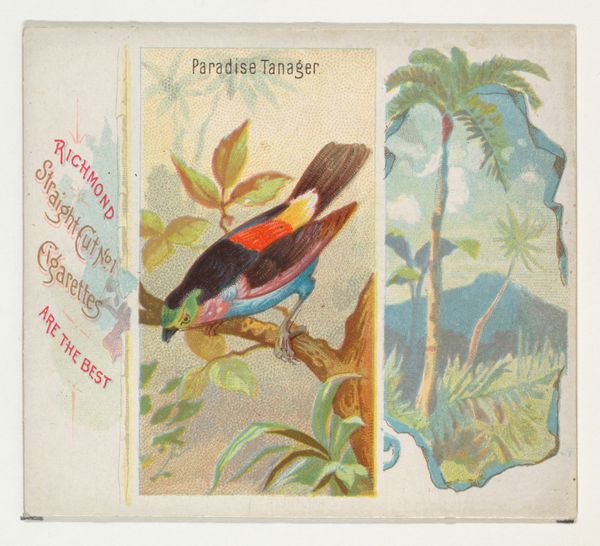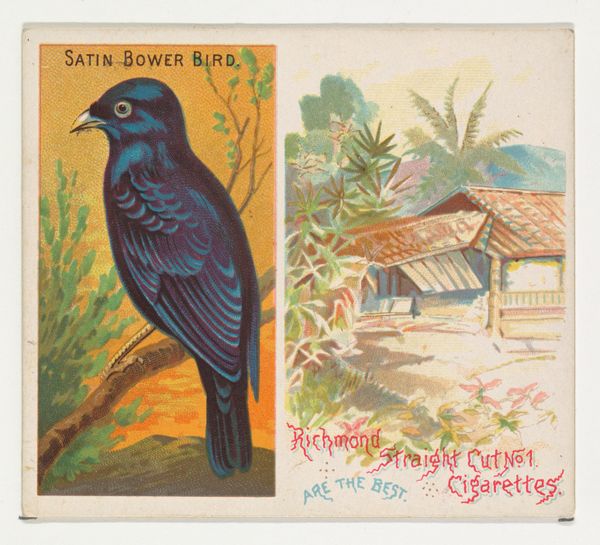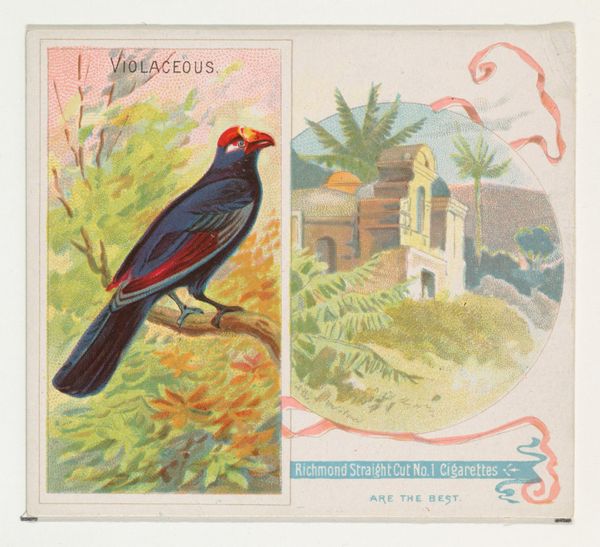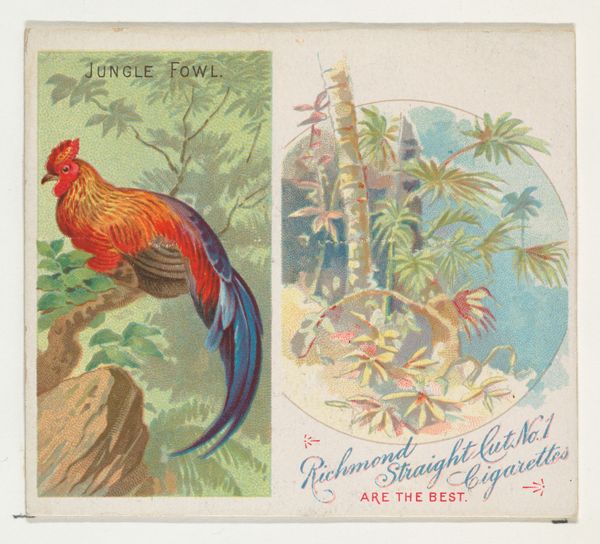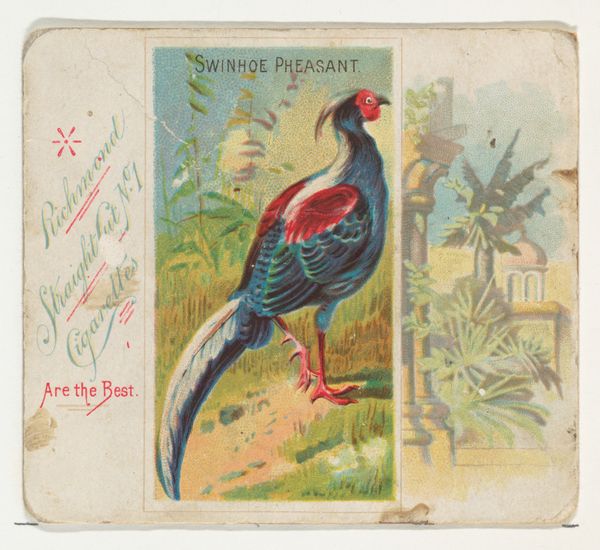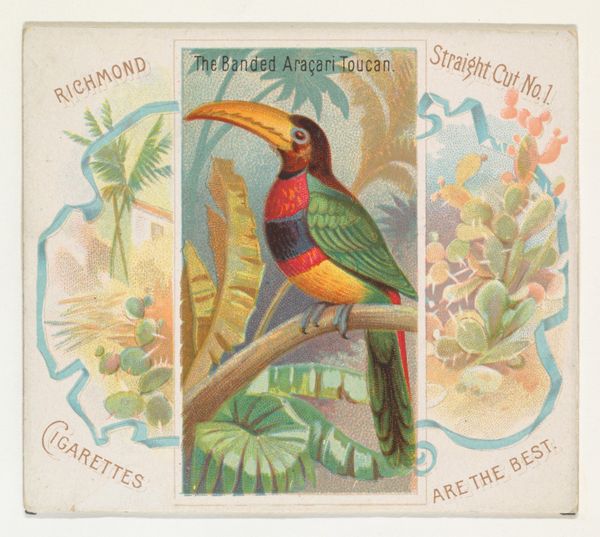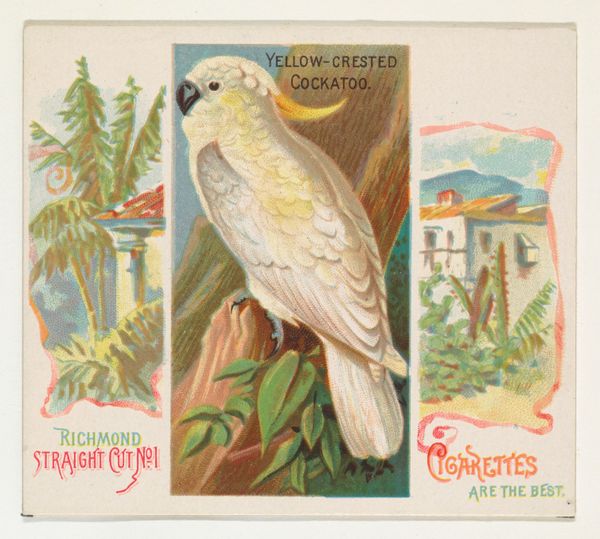
Yellow-Casque Black Hornbill, from Birds of the Tropics series (N38) for Allen & Ginter Cigarettes 1889
0:00
0:00
#
water colours
# print
#
coloured pencil
#
naive art
Dimensions: Sheet: 2 7/8 x 3 1/4 in. (7.3 x 8.3 cm)
Copyright: Public Domain
Curator: This is the Yellow-Casque Black Hornbill, from the "Birds of the Tropics" series, a trade card created around 1889 by Allen & Ginter. Editor: It has such a quaint, almost childlike quality! I am instantly drawn to the texture in the bird’s plumage—the way it is evoked through tiny marks made with such deliberate hand movements. It has to be viewed through the lens of material conditions, because the purpose was commercial. Curator: Precisely. Allen & Ginter were tobacco manufacturers, popularizing cigarette cards in the late 19th century. This particular card, rendered in watercolor and colored pencil, served as both advertising and a collectible item. Editor: So, in a way, a highly aesthetic object intended to be discarded. I am also curious how they distributed these cards – were they packaging inserts that the consumer interacted with directly, and saved from the waste stream by individuals? Curator: Exactly! The cards were inserted into cigarette packs. The “Birds of the Tropics” series reflected a broader cultural interest in exoticism and natural history. Such imagery boosted tobacco product marketing through this fascination with faraway lands. These images often reinforced imperial narratives through popular media. Editor: That makes the rendering choices all the more compelling. It has that exotic visual appeal and flattened perspective reminiscent of Japonisme—all rendered in these mass-produced cards to convey both value and disposability simultaneously. I find that contradiction very telling about industrial values. Curator: Right, there's a layering of cultural influence happening here. These trade cards also reflect how artistic styles were appropriated and repurposed within commercial contexts and, through this image distribution, ingrained into mainstream society’s perception. Editor: For me, it shows how a simple, almost naive image is rich with information about material consumption, labor, and popular culture at a certain historical moment. What was crafted as a collectible commercial novelty ended up a valuable signifier of an era’s culture and aesthetics. Curator: Indeed. Studying it highlights art’s vital role in negotiating commerce, culture, and perceptions of the world. Editor: And, it's a reminder of how humble, seemingly throwaway items can become cultural artifacts to study process, labor and material conditions.
Comments
No comments
Be the first to comment and join the conversation on the ultimate creative platform.
